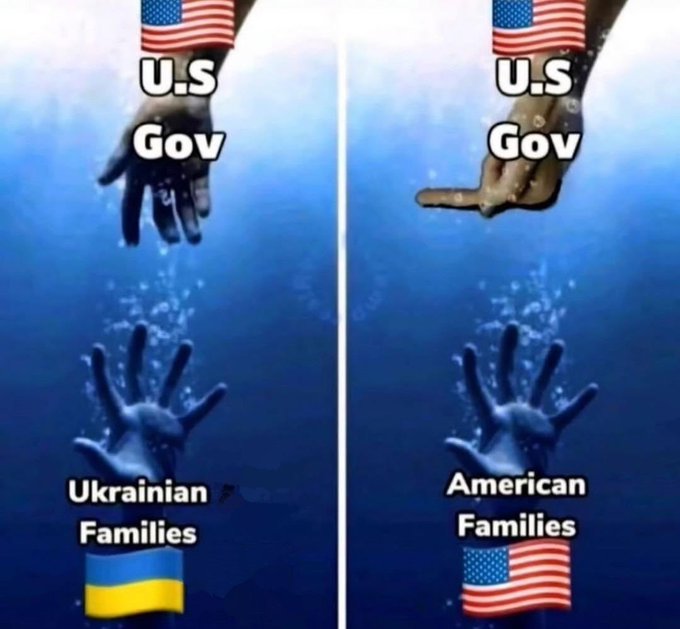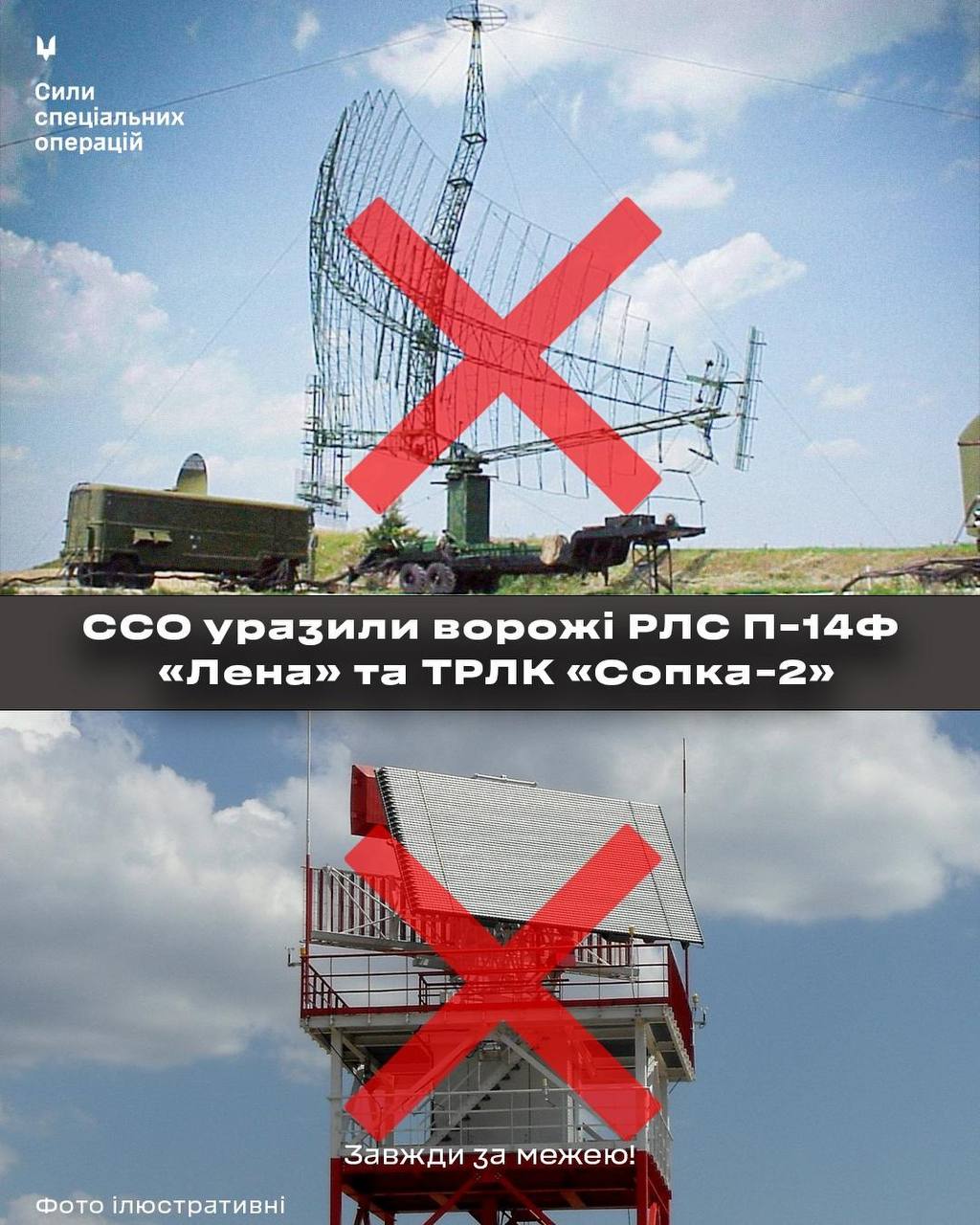Skip to comments.
Attack On Europe: Documenting Russian Equipment Losses During The 2022 Russian Invasion Of Ukraine (2 year anniversary)
ORYX ^
| Since February 24, 2022 and daily
| ORYX
Posted on 02/24/2024 5:59:01 AM PST by SpeedyInTexas
click here to read article
Navigation: use the links below to view more comments.
first previous 1-20 ... 20,301-20,320, 20,321-20,340, 20,341-20,360, 20,361-20,369 next last
To: Dopey
Do you always answer to "dopey"?
😂😂😂😂🍈🤡
To: BeauBo
OPEC+, which humorlessly includes Russia has been increasing output for the past months and a big increase is set to kick in.
Already factoring loss of Russian supply
To: BeauBo; blitz128
The US shale industry isn't collapsing, it's maturing. In this Oil Ground Up podcast recap, Novi Labs’ Brandon Myers breaks down break-even realities, inventory outlooks, technology gains, and the policy pressures shaping shale's future. Let's start with the numbers everyone's obsessing over: break-even prices. Brandon's team at Novi Labs has ditched the traditional 10% NPV metric that everyone's been citing forever (“probably doesn't mean anything,” he says bluntly) and instead focuses on two key numbers:
The two-year payout: What oil price do you need to get your money back in 24 months? In the Delaware Basin, that's the high $50s. In the Midland Basin, it's the mid-to-high $60s.
The 25% return threshold: This is where operators actually want to be to justify drilling new wells.
With WTI hovering around $65, we're basically sitting right on the edge. Not great, not terrible, just uncomfortably close to the line where drilling starts to make sense.
Here's where it gets interesting. Brandon Myers says there's still 1-2 decades of profitable inventory in the Permian at current price levels. That sounds like a lot, but context matters.
At $40 oil? You're looking at maybe 12 months of economic drilling locations. That inventory got hammered during the pre-2020 drilling boom and finished off during COVID when everyone was desperately trying to survive.
At $85 oil? There's plenty of runway for growth.
The sweet spot seems to be that $65-75 range where the industry can maintain current production levels without much growth or decline, what Brandon calls a “jagged plateau.”
https://novilabs.com/blog/is-us-shale-really-running-out-of-steam/
20,343
posted on
10/03/2025 8:16:31 AM PDT
by
AdmSmith
(GCTGATATGTCTATGATTACTCAT)
To: FtrPilot
A previously unpublished video has surfaced showing the September 24 naval drone strike on the oil terminal in Tuapse. The footage was filmed by a foreign ship crew docked in the port at the time.
https://x.com/NOELreports/status/1974063003650637883
1 min video
20,344
posted on
10/03/2025 8:21:25 AM PDT
by
AdmSmith
(GCTGATATGTCTATGATTACTCAT)
To: BeauBo
The price of Brent crude is about $10 a barrel cheaper today than it was a year ago. The world markets aren’t as threatened by comrade Putin as he would hope.
To: Mr. Lucky
Here comes Mr Lucky! It must be the weekend
To: JonPreston
To: JonPreston
A new breakthrough was achieved towards Hryshyne from the east following weeks of DRG activities. The full extent of this breakthrough remains unknown, but DRGs are operating on the outskirts of both Hryshyne and Novooleksandrivka. This makes the second to last road out of Pokrovsk-Myrnohrad unusable.
Dorozhnje and the freight train station of the same name have been occupied after over a week of battles, along with Ivanivka and Nove Shakhove to the north.
DRGs continue to operate in and around Novyi Donbas and on the approaches to Dobropillya. No new DRG activity within Dobropillya's city limits has been recorded over the past 12 hours.
The 12th "Azov" Brigade of the National Guard of Ukraine was deployed to Rubizhne (circled in green), which has prevented it's capture. Nevertheless, Zolotyi Kolodyaz - the focus of the initial media frenzy - has come under Russian control. DRGs continue to operate on the approaches to Hruzke.
Russian forces captured the Krasnolymanskaya Mine and the adjacent terykon. They also secured part of eastern Rodynske and made additional progress in Chervonyi Lyman.
Novoekonomichne has come under Russian control, and progress was made northwest of Hrodivka and west of Myrolyubivka.
The rest of Lysivka has moved into the grey zone, with unconfirmed reports of its capture. Suhkyi Yar and the guitar-shaped fortification continue to hold.
Russian forces continue to push north through western Pokrovsk and completed the capture of Leontovychi.
Positions were improved in northern Kotlyne and east of the village.
Southern Udachne and the town's train station was captured by Russian forces. Most of the rest of the town is a kill-zone or in the grey zone.
The remaining Ukrainian soldiers in Pokrovsk, Myrnohrad, and the surrounding villages are about to be encircled if nothing is done very soon. Only one road remains even slightly safe for a withdrawal to take place.
I will make a full and more accurate map update tomorrow, but I thought I should share these developments sooner rather than later.
 ****
****
To: JonPreston




Serious allegations from former CIA officer Larry Johnson about Senator Lindsey Graham: “There will be news coming out in the next couple of months about how he has profited financially off of money that came out of Ukraine, laundered through Latvia and made it way into his bank account. And now we're talking significant amounts of money. Department of justice is looking at it.”

To: AdmSmith
To: blitz128
🍈

To: JonPreston
To: JonPreston
Stalingrad has been in “liberated”😂
To: Dopey
🍈

To: blitz128
An explosion occurred at the Orsknefteorgsintez oil refinery in Russia's Orenburg region. The refinery has four primary oil refining units with a combined capacity of 6.6 million tons of oil per year. According to the source, the plant produces about 30 different products, including motor gasoline, diesel fuel, oils, aviation kerosene, bitumen, and fuel oil.
“The SSU continues to inflict serious damage on the Russian economy by targeting oil and gas industry facilities. The reduction of petrodollar revenues directly affects the aggressor's ability to continue its war against Ukraine. Nearly 40% of Russia's refinery capacity is already not working. We will keep working to increase that number,” the SSU source said.
https://www.ukrinform.net/rubric-ato/4043442-drones-strike-oil-refinery-in-russias-orsk-1400-kilometers-from-ukrainian-border.html
20,355
posted on
10/03/2025 10:52:40 AM PDT
by
AdmSmith
(GCTGATATGTCTATGATTACTCAT)
To: FtrPilot
The Special Operations Forces of the Armed Forces of Ukraine used strike drones to hit a P-14F Lena long-range early warning radar station and a Sopka-2 air traffic control radar complex located in Russia's Voronezh region.
Ukrinform reports this citing the SOF on Telegram.
Both facilities were part of Russia's air defense system designed to counter Ukrainian drones.

The P-14F Lena radar was a key element in controlling the airspace around the Buturlinovka Russian Air Force base.
The Sopka-2 radar complex, located in the village of Harmashivka, was part of Russia's continuous radar coverage line along the border with Ukraine.
https://www.ukrinform.net/rubric-ato/4043527-ukrainian-sof-drones-hit-two-russian-air-defense-radars-in-voronezh-region.html
The P-14 (also referred to by the NATO reporting name “Tall King”) is a 2D VHF radar that was developed and operated by the Soviet Union.
https://en.wikipedia.org/wiki/P-14_radar
20,356
posted on
10/03/2025 11:00:17 AM PDT
by
AdmSmith
(GCTGATATGTCTATGATTACTCAT)
In many respects, a true GAME CHANGER
Here, Russian fighters have returned to the battlefield, but this time, they are fighting for Ukraine. As the front shifts southwards, new footage shows how Russian soldiers are storming Russian lines, helping Ukrainians to accelerate counterattacks that now stretch across two regions.
As previously reported, Ukrainians started a counterattack in western Donetsk, where Ukrainian forces pushed back Russian units from exposed frontline villages near the Mokri Yali River. The aim was to collapse vulnerable salients, reset the frontline, and gain more favorable terrain, especially while Russian battalions were still overextended from their previous advances.
Now, a new player on the Ukrainian side has joined the fight. The Russian Volunteer Corps, a unit made up entirely of Russian citizens who rejected Putin’s so-called special military operation, has joined the battle on the Ukrainian side. Newly released footage shows the conducting of house-to-house clearing in Russian-occupied villages, targeting Russian positions with FPV drones, and capturing enemy troops and weapons. In one of the key engagements, the unit’s assault groups advanced through treelines near Andriivka-Klevtsove and engaged entrenched Russian positions. Bombers and tanks supported the push, while FPV drones isolated defenders by striking dugouts and movement corridors. By the end of the operation, the Russian volunteer Corps had taken sixteen Russian soldiers prisoner, with dozens more killed or wounded.
The volunteer unit was not operating alone, because Ukrainian special forces conducted a parallel assault in the same village, reportedly eliminating over 90 Russian troops and capturing 5 more. They also seized several Russian strongpoints near the settlement, likely forward observation posts, which gave them better fire control over the surrounding terrain. The footage now makes it clear: the attack began from the west, with special forces, softening up enemy positions and clearing the path for the main assault units to follow.
With early success confirmed, the Ukrainian command has now expanded the operation. The 225th Assault Brigade, best known for breaching Russian defenses during its successful offensive in the Kursk region, has redeployed and launched a new thrust further south. Combat footage from Vorone village shows the 225th using Bradley armored vehicles to engage Russian positions and clear treelines. This push appears to be aimed at eliminating Russian infiltration groups that had tried to bypass the frontline and threaten Ukrainian supply nodes near Sosnivka. According to reports, this southern thrust stopped what could have been a serious Russian breach. It is a clear sign that Ukraine is not only regaining ground but actively reinforcing weak points and stabilizing the entire sector.
What makes this so effective is that, first, Ukrainian units are relying heavily on drone-coordinated assaults, allowing them to strike Russian positions from the air before moving in with ground units. Second, the area offers unusually favorable conditions for Ukraine’s tactics, because the terrain includes open fields and light treelines that improve drone connectivity and provide clear sightlines. There are no deep gullies or dried riverbeds, terrain features that usually disrupt drone signals. Finally, the Russian positions here are poorly prepared, and because this was not a long-held front, Russian troops were never able to inherit solid fortifications. Their trenches lack top-down protection, making them highly vulnerable to drone-dropped munitions.
The result is that Russian forces have been forced into passivity because after Ukraine’s initial strikes, Russian soldiers had to retreat into underground dugouts and basements, reducing their ability to move or coordinate defense. Ukrainian footage shows several Russian positions taken almost intact, with defenders surrendering rather than holding ground.
Overall, Ukraine’s counteroffensive in this sector is not only regaining territory, but it is also systematically undoing months of slow Russian gains. Once again, Russian units appear to have hit their operational ceiling, as seen in Sumy; they can advance through weaker positions but struggle to hold ground under pressure. That this collapse is now being accelerated by Russian nationals themselves from the Russian Volunteer Corps, which adds a powerful symbolic layer. And with the 225th Brigade, which broke through Russian lines in Kursk, reinforcing the front, Ukraine is turning battlefield momentum into political messaging.”
I wonder how many other Russians will join this fight against the stupidity and cruelty of Putin and Dugin, as the prospect of years more useless war becomes the only expectation for Russians who have hoped for peace in the near future.
This might fund some game changing weapon supplies to Ukraine (security guarantee), and reconstruction:
Kyiv Independent (4 Sept):
“Ukraine and the U.S. held the first board meeting of an investment fund tied to a resources deal that has been a centerpiece of President Donald Trump’s administration’s talks with Kyiv in his second term.
The meeting on Sept. 3 launches the operations for the fund, designed to sustain American interest in Ukraine and help its war-torn economy with foreign investment now and for future reconstruction.
During the meeting, the board authorized the opening of bank accounts, appointed an administrator and investment advisor, and named the members of the four committees responsible for overseeing the funds’ operations, Prime Minister Yuliia Svyrydenko wrote on her Telegram channel.
The U.S. also announced its three board managers to the fund, who include Treasury Secretary Scott Bessent, and Chief Investment Officer Connor Coleman and Vice President and General Counsel Robert Stebbins from the International Development Finance Corporation (DFC).
Kyiv previously announced its three representatives on Sept. 1: Economy, Environment, and Agriculture Minister Oleksiy Sobolev and his deputy Yegor Perelygin, and State Secretary of the Foreign Ministry Oleksandr Karasevich.
“I think it went very well,” Perelygin told the Kyiv Independent after the meeting.
“The fund is not only a complex mechanism for economic growth and reconstruction — it’s a market maker level instrument in the making that can foster the development of strategic sectors like mining and refining critical minerals.”
The next steps are to sign off on the investment guidelines and create a list of initial projects that “align with the Fund’s vision and objectives” that can be “feasibly developed,” Perelygin said. The board hopes to kickstart the development of three “high-quality” projects in the next 18 months, he added.
The board is planning follow-up discussions on potential projects through the fund, and a U.S. delegation will start scouting sites when it arrives in Ukraine next week. The government has already announced an auction for the Dobra lithium mine.
Sobolev told Bloomberg TV on Aug. 29 that the fund was “progressing very nicely,” adding that Ukraine is preparing to auction more mining licenses to create investment opportunities for U.S. companies. He noted the recently greenlit Dobra lithium project, saying that mining would be one of the more “interesting” areas for the U.S.
The lithium deposit in central Ukraine contains 80-105 million metric tons of the highly coveted material, used in batteries. Washington-backed mining company TechMet said it will bid on the project, although it could run into a legal battle with Australian firm European Lithium, which claims to have the rights to Dobra’s license
Kyiv and Washington signed a deal on April 30 giving the U.S. special access to investment projects in Ukraine, spanning natural resources, related infrastructure, and even defense projects. New military aid could be included as part of Washington’s future contributions, if the U.S. chooses to consider military assistance for the fund.
Many Ukrainian companies believe that if it works out, the agreement will inject critical foreign capital and technology into cash-starved sectors like critical raw materials. Natural resources, oil and gas, infrastructure, and defense projects are also on the table...
...The U.S. will have off-take rights — meaning the U.S. has first dibs on materials extracted — but it will be on commercial terms rather than special terms. The DFC will also back investments with political risk insurance to ease the concerns of investors.”
To: JonPreston
4 sep, so only a month old, but more good news
To: gleeaikin; BeauBo; blitz128
Russian Offensive Campaign Assessment, October 3, 2025
Russian forces conducted a large, combined missile and drone strike against Ukraine on the night of October 2 to 3, increasingly leveraging missiles in large but infrequent strike packages. The Ukrainian Air Force reported that Russian forces launched seven Iskander-M/KN-23 ballistic missiles; 21 Iskander-K cruise missiles; seven Kh-59/69 cruise missiles; and 381 Shahed-type, Gerbera-type, and other drones from the directions of Kursk, Bryansk, and Oryol cities; Millerovo, Rostov Oblast; Shatalovo, Smolensk Oblast; and Primorsk-Akhtarsk, Krasnodar Krai.[1] The Ukrainian Air Force reported that Ukrainian air defenses downed 303 drones, 12 Iskander-K cruise missiles, and five Kh-59/69 guided air missiles. The Ukrainian Air Force reported that 18 missiles and 78 drones struck 15 locations throughout Ukraine and that drone debris fell in six locations. The Ukrainian Air Force reported that the Russian drones and missiles primarily targeted critical energy infrastructure in Kharkiv and Poltava oblasts and struck Sumy, Dnipropetrovsk, Odesa, and Kyiv oblasts. The Ukrainian Ministry of Energy and Ukrainian state-owned gas operator Naftogaz reported that Russian drones and missiles intentionally targeted critical energy infrastructure during the October 2-3 strike, including gas transportation infrastructure that has no military purpose, to deprive Ukrainian civilians of the ability to heat their homes leading into the winter of 2025 to 2026.[2] Naftogaz Board Chairman Serhiy Koertskyi reported that the October 2-3 strike significantly damaged unspecified Ukrainian energy facilities.[3] Ukrainian President Volodymyr Zelensky warned in August 2025 that Russia was increasingly targeting Ukrainian energy infrastructure to undermine Ukraine's preparations for the winter heating season.[4]

Russian forces likely stockpiled ballistic and cruise missiles throughout September 2025 to conduct a few large scale drone and missile strikes on select days. Ukrainian Commander-in-Chief General Oleksandr Syrskyi reported on October 2 that Russian forces launched 6,900 drones against Ukraine in September 2025, including more than 3,600 Shahed-type drones.[5] Russian forces do not regularly launch missiles in nightly strike packages against Ukraine and often go several days without using missiles in these packages. Russian forces appear to be stockpiling ballistic and cruise missiles most days and then launching large numbers of missiles in conjunction with large numbers of drones, likely to overwhelm Ukrainian air defense systems. Russian forces notably only conducted four overnight strikes containing over 10 missiles in September 2025 and have conducted one overnight strike containing over 40 missiles roughly every two weeks since late August 2025, underscoring Russia's recent pattern of intermittently conducting a few large, combined strikes between Russia's most consistent, smaller drone strikes.[6] Russian forces are continuing to use more cruise missiles and fewer ballistic missiles in combined strikes and are likely continuing to rely on ballistic missiles to conduct pinpoint strikes on specific targets while using drones and cruise missiles to overwhelm Ukrainian air defenses. Ukraine's Patriot air defense systems remain Ukraine's only air defense systems capable of downing Russian ballistic missiles, and Russian forces may be specifically targeting cities and energy infrastructure not actively defended by Ukraine's Patriot systems to increase the chances that Russia successfully strikes its intended target.
Russian forces are likely leveraging recent upgrades to Russian ballistic missiles to improve their ability to penetrate Ukrainian air defense systems. The Financial Times (FT) reported on October 3 that Russia likely recently modified its Iskander-M and Kinzhal ballistic missiles to execute unexpected diversionary maneuvers during the terminal flight phase to “confuse” Ukrainian Patriot interceptor missiles.[7] FT reported that a Western official familiar with Ukraine's Patriot systems’ interception rates attributed the recent “marked” decrease in Ukraine's Patriot interception rates to this new “pattern” in Russian missiles’ terminal phase maneuvers. The FT noted that Ukraine's air defenses may also be degraded due to ongoing Russian strikes targeting Ukraine's Patriot air defense systems. A US Defense Intelligence Agency (DIA) report published in August 2025 stated that modifications that enable Russian ballistic missiles to change trajectories and perform maneuvers atypical of a traditional ballistic trajectory have impeded Ukraine's ability to leverage Patriot air defense systems against Russian ballistic missiles.[8]
Russia continues to escalate its destabilization efforts against Europe as European officials continue to report unidentified drones operating in their airspace. Reuters reported on October 3 that Danish intelligence indicates that Russian warships have repeatedly sailed on collision courses with Danish vessels and pointed weapons at Danish military helicopters and naval vessels during passage through the Danish straits.[9] Reuters reported that Danish Defense Intelligence Service Director Thomas Ahrenkiel stated that Danish intelligence indicates that Russian warships equipped with sonar and jamming equipment have sailed through the Danish straits and that it was “highly probable” that the ships have jammed signals and caused significant GPS interference in Denmark at least once. Belgian outlet VRT reported on October 3 that a Belgian aircraft observed 15 unattributed drones above the Elsenborn military base in East Cantons, Belgium, and that the drones then flew into German airspace on the night of October 2 to 3.[10] VRT reported that the Belgian Ministry of Defense (MoD) is investigating the matter to identify the actors behind the most recent aerial incursion, and Belgian Defense Minister Theo Francken assessed that the drone incursion is characteristic of Russia's broader ongoing hybrid warfare campaign to destabilize Europe. The New York Times (NYT) reported on October 2 that German authorities closed the Munich Airport overnight due to several unattributed drone sightings, forcing authorities to ground and divert several flights.[11] It remains unclear if the German and Belgian aerial incursion incidents are connected. Danish intelligence on Russia's naval provocations and the recent aerial incursions cohere with ISW’s ongoing assessment that Russia is conducting a pervasive hybrid warfare campaign against Europe designed to destabilize the continent and undermine cohesion.[12]
The Kremlin continues efforts to undermine Western-brokered peace in Bosnia and Herzegovina, likely as part of a larger campaign to divide and distract Europe. Russian President Vladimir Putin met with President of Republika Srpska (the Serbian political entity within Bosnia and Herzegovina) Milorad Dodik, on October 2, following Putin's speech at the Valdai Club, an international discussion forum that the Kremlin has used in its decades-long efforts to influence Western policy in Russia's favor.[13] Dodik told Russian state media outlet Russia Today (RT) that he asked Putin not to leave Republika Srpska “at the mercy” of the European Union (EU), which is “strangling” the country.[14] Putin and Dodik have now met eight times since Russia invaded Ukraine in 2022, and last met on April 1, 2025.[15] The Kremlin has previously leveraged its relationship with Republika Srpska to undermine the US-backed Dayton Accords, likely in an effort to throw the Balkans into turmoil.[16] Putin's meeting with Dodik, amidst ongoing unidentified drone incursion over North Atlantic Treaty Organization (NATO) airspace, is likely part of the Kremlin's ongoing effort to sow divisions in Europe and prevent a coordinated NATO response if Russia invades a NATO country.
Norway and Ukraine's European partners opened the largest training center for Ukrainian military personnel in Poland on October 1. The Ukrainian Ministry of Defense (MoD) announced on October 2 that NATO and Ukrainian officials participated in an opening ceremony of Camp Jomsborg, the largest training center for Ukrainian military personnel in Poland.[17] The Ukrainian MoD reported that the facility can accommodate up to 1,200 military personnel and is designed to augment the exchange of combat experience between Ukraine and NATO. Ukrainian broadcaster Armyinform reported that military personnel from Estonia and other NATO member states may join the 250 Norwegian military instructors already stationed at the Polish training ground.[18]
more + maps https://understandingwar.org/research/russia-ukraine/russian-offensive-campaign-assessment-october-3-2025/
October 7th is Putin's birthday. What "gifts" will be delivered? Is it just extra missiles and bombs on Ukraine or will it be something extra like the October 7th massacre in Israel?
20,359
posted on
10/04/2025 3:27:31 AM PDT
by
AdmSmith
(GCTGATATGTCTATGATTACTCAT)
To: AdmSmith
Navigation: use the links below to view more comments.
first previous 1-20 ... 20,301-20,320, 20,321-20,340, 20,341-20,360, 20,361-20,369 next last
Disclaimer:
Opinions posted on Free Republic are those of the individual
posters and do not necessarily represent the opinion of Free Republic or its
management. All materials posted herein are protected by copyright law and the
exemption for fair use of copyrighted works.
FreeRepublic.com is powered by software copyright 2000-2008 John Robinson

 ****
****









